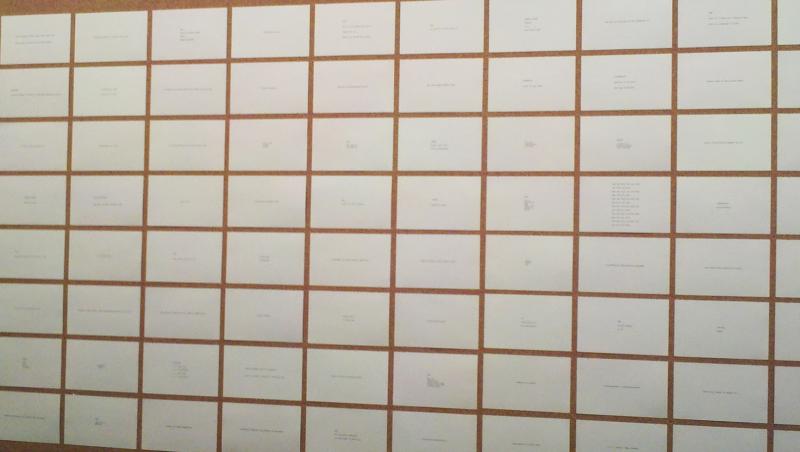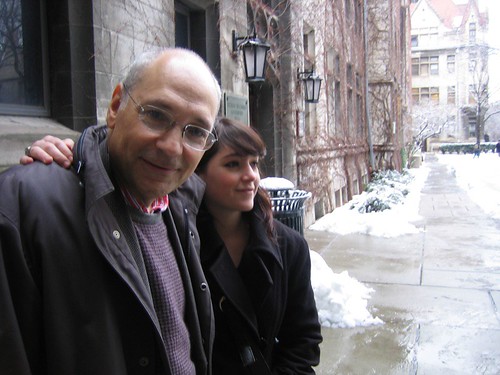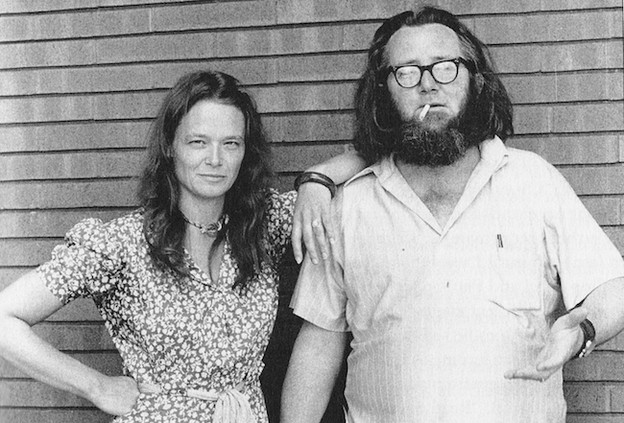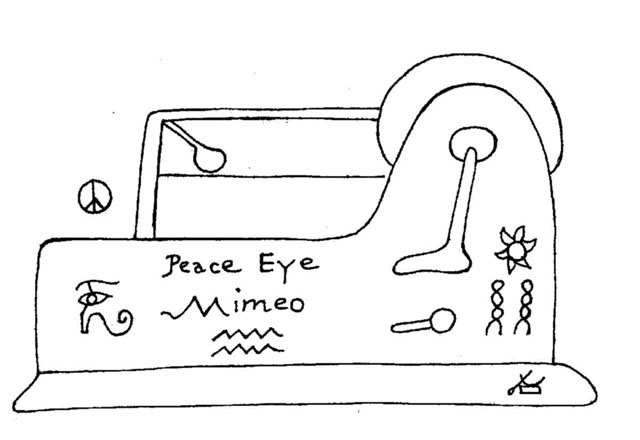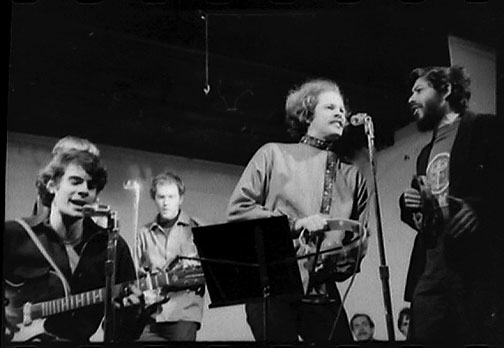Last year, I was tasked with a weekend project not unlike the audio documents you'll be making as part of your finals: put together an "audio essay" to be shared as part of PennSound's 10th anniversary celebration. The resulting piece, the product of maybe 6–8 hours' work, ran just over nine and a half minutes, and you can listen to it below:
I thought I'd share some notes on my process with the hopes that it might be helpful for you as you get started on your finals.
1. Outline your basic concept
I wanted my piece to generally break down into two basic sections: first, a short discussion of how I came to work at PennSound and some of the notable discoveries I made during my early years there, and second, discussion of a few memorable sessions I'd recorded with a few favorite poets.
2. Gather and prep raw materials
1. Outline your basic concept
I wanted my piece to generally break down into two basic sections: first, a short discussion of how I came to work at PennSound and some of the notable discoveries I made during my early years there, and second, discussion of a few memorable sessions I'd recorded with a few favorite poets.
2. Gather and prep raw materials
I decided upon the recordings that I wanted to use for my piece and downloaded them from PennSound, then used Audacity to make the smaller cuts I'd be using. Note that I've used simplified yet descriptive file names for the cuts I've made, distinguishing the order I want to use them in, or just their contents.
For the section mimicking several Christian Bök tracks playing simultaneously, I made a sub-mix to export as its own MP3 file. The blue shape under the last track is contouring its volume level to create a fade-in. Thought it's not easy to see, I've also stereo-panned the two beatboxing tracks relatively hard left and right, while the "lead vocal" goes closer to the middle.
 |
Here, while trimming down a short snippet from the Ashbery/Lauterbach "Litany," you can see that I've left room tone (i.e. "silence;" the noise floor of tape hiss) on either side, so that I can seamlessly integrate it with my own voice-over when stitching the track together.
 |
3. Prepare your script
It's much easier to record your voice-over when you're reading from a pre-prepared script, so take the time to write things down in advance, and mark out where your insertions will go as well (as you can see below). Even though you're free to improvise when recording, it'll help you work around tricky diction if you have clear reading copy to work from.
4. Record and edit your voice-over
For my piece, I used my little Tascam portable on a tripod right in front of my laptop, then copied the file to my computer so I could edit it in Audacity. My preferred method is to record everything linearly in one long take, then go through and pull out the individual files as needed. You're bound to make mistakes, and when you do, just leave a sufficient pause and then start again. It's also not a bad idea to give a second take when in the moment you feel less than enamoured of a certain reading. Try to record sections of voice-over in as continuous sections as you can, but leave sufficient pauses between sections so you can trim down, and/or make splices with enough room tone to cover the gaps.
Here, you can see that I've cut a section of voice-over very closely at the head, to eliminate the sound of me inhaling before I start speaking, but left a silent tail that I can use to overlay another voice-over section.
Organize your voice-over sections in a similar fashion as your samples: I've numbered them in order of their appearance (n.b. two pieces that have alternate takes) and added a few words to clue me in to their contents.
5. Final construction
I opted to use Garageband, since that's the software I'm most comfortable using, to lay out my final podcast. Here's what the full piece looks like in the editor:
You'll notice I've used two tracks for voice-over and two tracks for the inserted samples (which are ducked, i.e. the software will always make the voice-over tracks louder than the samples), plus one track for music (I eventually ended up ditching the backing music). I use two tracks for each section so that I can put together tighter edits using that room tone before and after the sound snippets without cutting any one track short (i.e. those sounds overlap on adjacent tracks so they can play out through the edit point). Edits often need to be fine-tuned by moving a sample back and forth little by little, sometimes just a fraction of a second to get the right pacing, the right pauses, and natural speech-like flow. You can also use fade-ins and fade-outs to make pieces fit together more smoothly.
Here, you can more clearly see the interplay of tracks on a section from the middle of the piece. The second and third tracks are my own voice-over, while the fourth and fifth are samples of other poets. Originally the last track was just for samples that needed fade-ins (namely the Tardos) but I wound up doing a fade-in on the Bök as well.
It certainly takes a lot of trial and error — and by no means would I call myself an expert — but I hope that this might be of use to you as you start thinking about your final projects.
5. Final construction
I opted to use Garageband, since that's the software I'm most comfortable using, to lay out my final podcast. Here's what the full piece looks like in the editor:
You'll notice I've used two tracks for voice-over and two tracks for the inserted samples (which are ducked, i.e. the software will always make the voice-over tracks louder than the samples), plus one track for music (I eventually ended up ditching the backing music). I use two tracks for each section so that I can put together tighter edits using that room tone before and after the sound snippets without cutting any one track short (i.e. those sounds overlap on adjacent tracks so they can play out through the edit point). Edits often need to be fine-tuned by moving a sample back and forth little by little, sometimes just a fraction of a second to get the right pacing, the right pauses, and natural speech-like flow. You can also use fade-ins and fade-outs to make pieces fit together more smoothly.
Here, you can more clearly see the interplay of tracks on a section from the middle of the piece. The second and third tracks are my own voice-over, while the fourth and fifth are samples of other poets. Originally the last track was just for samples that needed fade-ins (namely the Tardos) but I wound up doing a fade-in on the Bök as well.
It certainly takes a lot of trial and error — and by no means would I call myself an expert — but I hope that this might be of use to you as you start thinking about your final projects.










